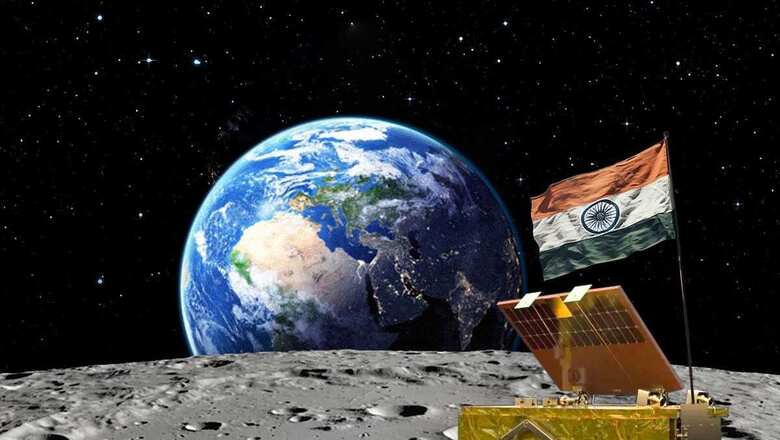
views
Chandrayaan-3 is not just a mission for the Indian Space Research Organisation (ISRO) but a mission for India. A counterfactual might be thrown at this assertion that any ISRO mission is an ipso-facto Indian mission too. Correct, but if we consider all previous missions of ISRO to be equal, then this mission would come off as first among the equals. The reason being the miss by a whisker in ISRO’s last attempt when Chandrayaan-2 failed to achieve its intended objectives has lived in the public memory for the last 4 years.
Public memory is a very strong emotion and in this case, it’s the collective memory of 1.4 billion people. The memory is made up of re-energised hope, an acute sense of nationalism, ideals of patriotism and a strong pride with respect to ISRO as an institution. This is despite the fact that between Chandrayaan-2 and Chandrayaan-3, four years have passed. These four years were in no sense ordinary by any stretch of the imagination. The world went through a global pandemic with millions of lives lost. Despite this, an ordinary Indian still sees hope for himself in the success of India’s space mission. Very few things in India unite people together like nothing else. Success in outer space is one such thing.
Space as an entity has fascinated human beings since time immemorial. So, it comes as no surprise that human beings want to explore outer space. This exploration is seen in the form of mankind’s conquest over the extra-terrestrial. The lunar exploration has gained the most limelight among all aspects of space exploration. This is also natural since the Moon is the Earth’s only satellite and is visible to the naked eye to every Earth-bound species. Therefore, lunar explorations over the last half a century and more have got a huge mass appeal.
Also, the Moon has got a special place and mention in various cultures and civilisations in the form of a story-time entity for kids or a regularly used metaphor in the local sphere of life. A scientist or an engineer is not generally concerned about these ‘social aspects’ of cosmic or celestial entities but social scientists do look towards the broader picture and try to understand why certain things attract people more than others. The international politics of outer space is a discipline which deals with such aspects. Today, all space-powered nations are looking towards Chandrayaan-3 with great zeal, especially after Russia’s lunar mission crash-landed just a few days ago.
India is looking at this opportunity not only in terms of satisfying the conscience of its domestic audience but also to stamp its place as a space-powered nation among the comity of nations. Indian Prime Minister, Narendra Modi, who is currently attending the BRICS summit at Johannesburg in South Africa would also be looking at Chandrayaan’s feat closely. At a diplomatic forum like BRICS, India’s authority as a nation will increase if Chandrayaan-3 makes a successful landing on the Moon’s surface today, i.e. August 23, 2023. This would also boost India’s future endeavours in outer space such as Mission Gaganyaan, which will be India’s first attempt to have a human space flight mission. It was supposed to be conducted in 2022, during India’s 75th year of Independence, but has now been postponed to 2024 in order to focus on Chandrayaan-3.
Outer space is an extremely costly affair involving billions of dollars. Therefore, its successes are grand and its losses are almost crest-falling in nature. So, any attempt by humans to reach and explore outer space must be applauded by the general public. Of course, scientists and individuals in charge of such missions do a lot of cost analysis while assessing the success or failures of such missions. Outer space is not a friendly environment organically made for human endeavours or conquests. On the contrary, it’s humanity’s zeal at large to conquer the universe. Keeping all this in mind, August 23, 2023, could prove to be a landmark in India’s space history. Success and failures are two sides of the same coin but hopefully, the Indian flag will fly on the moon this time.
The writer is a Doctoral Fellow at School of International Studies, Jawaharlal Nehru University, New Delhi. Views expressed in the above piece are personal and solely that of the author. They do not necessarily reflect News18’s views.



















Comments
0 comment